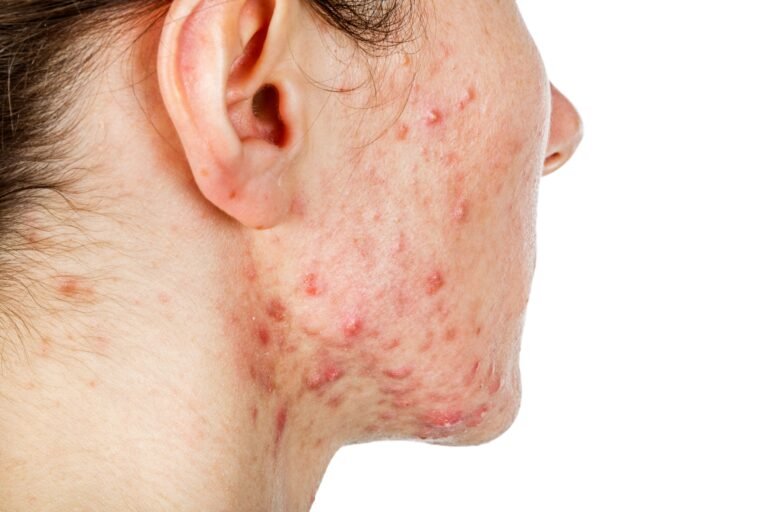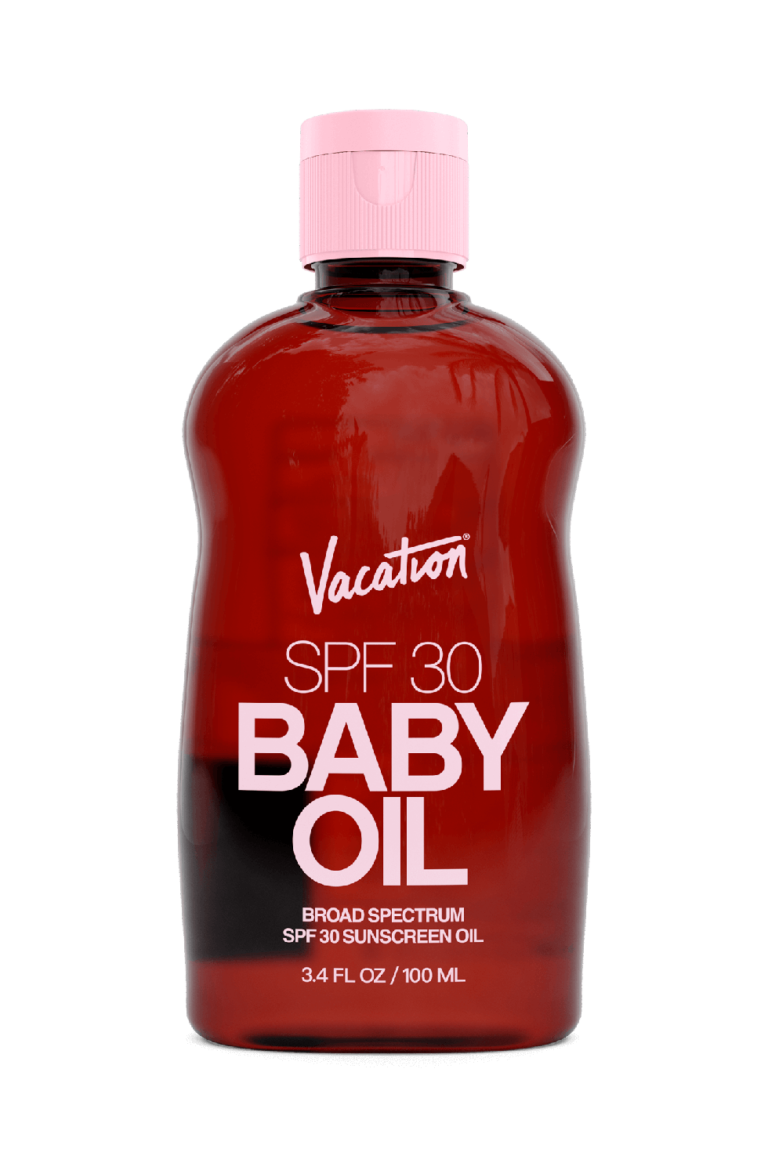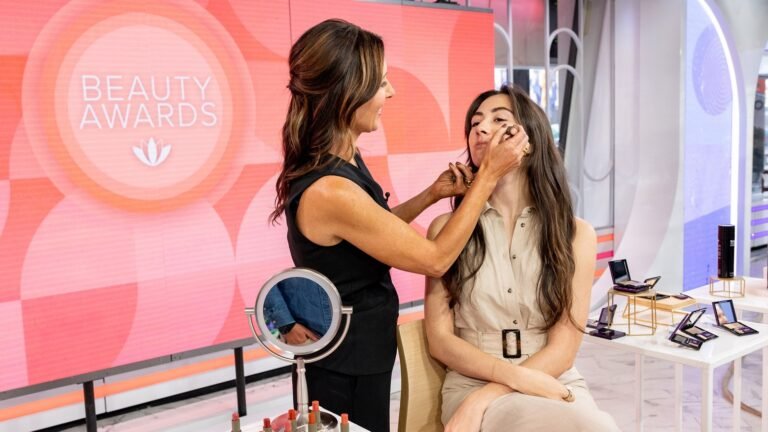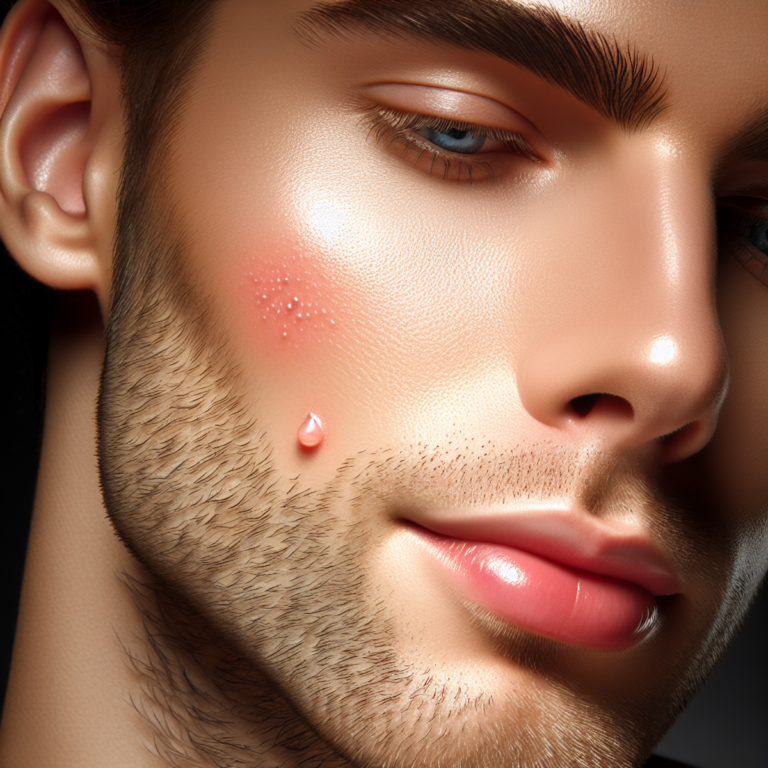Options for Treating Acne, As Recommended By Dermatologists
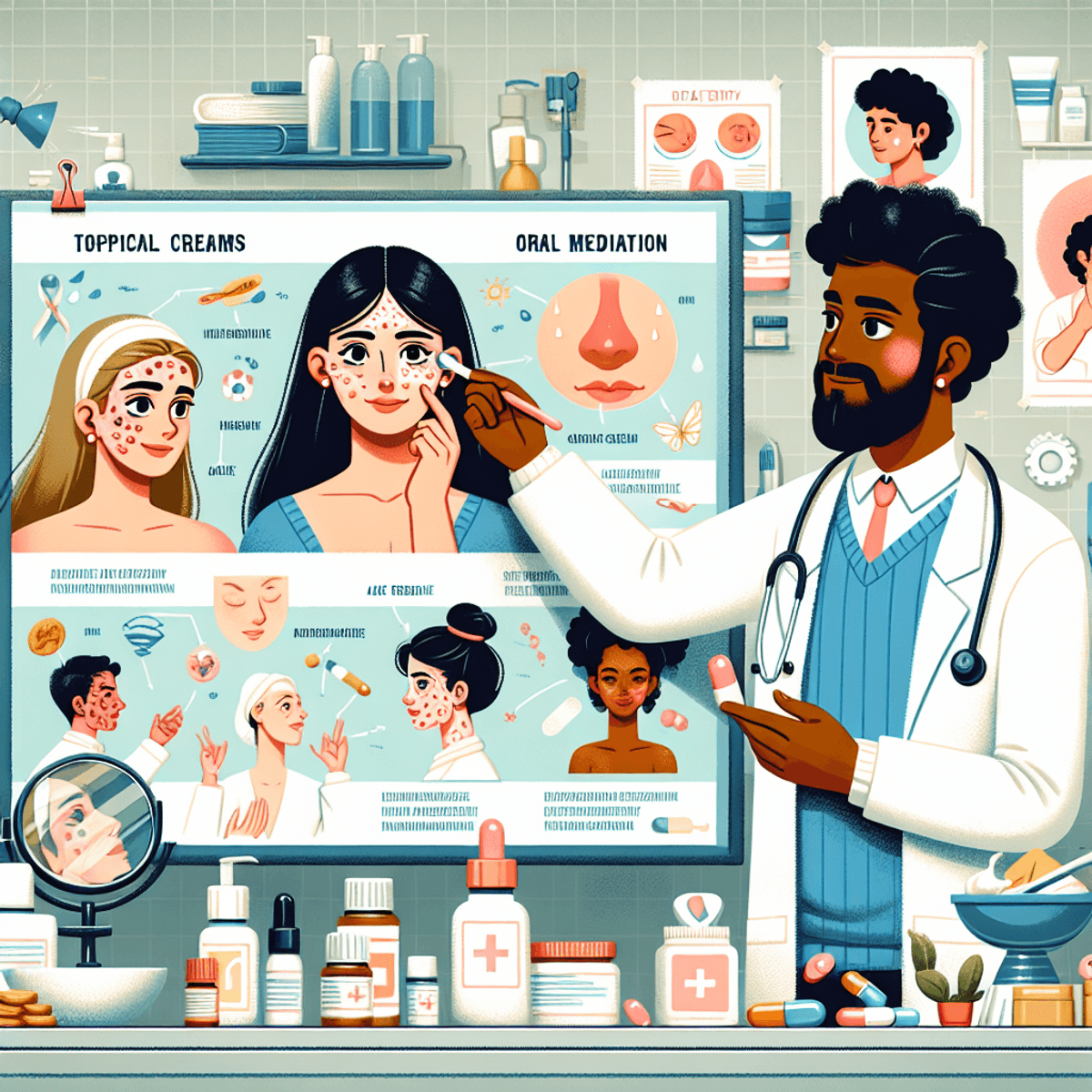
Introduction
Acne is a common skin condition that affects millions of people worldwide. It is characterized by the presence of pimples, blackheads, and whiteheads, often accompanied by redness and inflammation. While acne can occur at any age, it is most commonly seen during adolescence due to hormonal changes.
When it comes to treating acne, there are numerous options available. However, it is crucial to seek professional advice from dermatologists who specialize in skin health. Dermatologists have the expertise and knowledge to develop personalized treatment plans tailored to an individual’s specific needs.
Seeking professional advice for acne treatment offers several benefits:
- Accurate Diagnosis: Dermatologists can accurately diagnose the type and severity of acne, which is essential in determining the appropriate treatment approach.
- Customized Treatment Plans: Dermatologists can create personalized treatment plans based on factors such as skin type, medical history, and lifestyle.
- Access to Prescription Medications: Dermatologists have access to a wide range of prescription medications that are not available over-the-counter. These medications are often more potent and effective in managing acne.
- Expert Guidance: Dermatologists can provide expert guidance on skincare routines, lifestyle modifications, and other measures that can complement acne treatment.
By seeking professional advice from dermatologists, individuals with acne can benefit from comprehensive and evidence-based treatment options that address their specific concerns.
1. Non-Prescription Treatments for Acne
Non-prescription treatments are essential in managing mild to moderate acne. To effectively take care of your skin, it’s important to understand how these treatments work and the common ingredients found in over-the-counter acne products.
1.1 Understanding Non-Prescription Acne Medications
Non-prescription treatments for acne usually target the causes of acne, such as excess oil, clogged pores, and inflammation. These products often contain active ingredients that:
- Unclog pores
- Reduce bacteria on the skin
- Decrease inflammation
Here are some common active ingredients in over-the-counter acne products:
- Benzoyl Peroxide: This ingredient has antibacterial properties that help reduce acne-causing bacteria on the surface of the skin and inside hair follicles.
- Salicylic Acid: A beta-hydroxy acid, salicylic acid exfoliates the skin, preventing pores from getting clogged and reducing inflammation.
- Sulfur: Often used alongside other ingredients, sulfur helps break down whiteheads and blackheads while also reducing oiliness.
- Glycolic Acid: An alpha-hydroxy acid, glycolic acid exfoliates the skin, promoting cell turnover and preventing clogged pores.
Understanding how these non-prescription treatments work can help you choose the right products for your specific skincare needs.
1.2 The Role of Adapalene in Acne Care
Adapalene is a widely used non-prescription treatment for acne that belongs to a class of medications called retinoids. It is available in gel form and has been proven effective in treating mild to moderate acne. Let’s take a closer look at the role of adapalene in acne care:
What is adapalene and how does it help in acne management?
Adapalene works by reducing the formation of comedones (clogged pores) and promoting skin cell turnover. It helps to unclog pores, prevent new acne lesions from forming, and reduce inflammation associated with existing breakouts. By normalizing the skin cell turnover process, adapalene promotes the growth of healthier skin.
Using adapalene as part of your skincare routine
Incorporating adapalene into your skincare routine can be beneficial for managing acne. Here are some tips for using adapalene effectively:
- Start by applying a small pea-sized amount of gel to clean, dry skin once daily, preferably in the evening.
- Gently massage the gel into the affected areas until it is evenly distributed.
- Avoid contact with eyes, lips, and mucous membranes.
- If you experience excessive dryness or irritation, you can start by using it every other day or apply a moisturizer after the gel has dried.
- It’s important to be patient with adapalene as it may take several weeks to see noticeable improvements in your acne.
Adapalene gel is generally well-tolerated, but like any medication, it may cause some side effects. These can include dryness, redness, peeling, and mild burning or stinging sensation. However, these side effects are usually temporary and tend to subside as your skin gets accustomed to the treatment.
By incorporating adapalene into your skincare routine, you can improve the overall appearance and health of your skin.
1.3 Tips for Maximizing the Benefits of Adapalene
Adapalene is a commonly used non-prescription treatment for acne. It is a topical retinoid that helps to unclog pores, reduce inflammation, and promote skin cell turnover. To maximize the benefits of adapalene gel in treating acne, here are some tips to keep in mind:
- Start with a clean face: Before applying adapalene gel, make sure your face is clean and dry. Use a gentle cleanser to remove any dirt, oil, or makeup.
- Apply a pea-sized amount: A little goes a long way with adapalene gel. Use only a pea-sized amount for your entire face. Applying too much can lead to excessive dryness and irritation.
- Use it once daily: Adapalene gel is typically applied once daily, preferably in the evening before bedtime. This allows the product to work overnight without interference from other skincare products.
- Be patient: It takes time for adapalene to show its full effects on acne-prone skin. It may take several weeks or even months to see significant improvement. Consistency is key, so don’t give up too soon.
- Moisturize properly: Adapalene can cause dryness and peeling, especially during the initial stages of treatment. Be sure to use a gentle, non-comedogenic moisturizer to keep your skin hydrated and prevent excessive dryness.
- Protect your skin from the sun: Adapalene can increase sun sensitivity, so it’s important to protect your skin by wearing sunscreen daily. Look for a broad-spectrum sunscreen with an SPF of 30 or higher.
- Avoid harsh products: While using adapalene gel, it’s best to avoid harsh scrubs, exfoliants, and other potentially irritating skincare products. These can further irritate your skin and interfere with the effectiveness of adapalene.
Remember, everyone’s skin is different, so what works for one person may not work for another. If you experience severe dryness, irritation, or any other concerning side effects, it’s important to consult your dermatologist for further guidance. Adapalene gel can be a powerful tool in your acne-fighting arsenal when used correctly and consistently.
2. Topical and Oral Medications Prescribed by Dermatologists
When it comes to treating acne, dermatologists often use topical and oral medications to help control the condition effectively. These medications target the underlying causes of acne, such as excess oil production, inflammation, and bacterial overgrowth. Let’s explore some commonly prescribed options in more detail:
2.1 Oral Antibiotics for Acne: How They Work and What to Expect
Oral antibiotics are frequently used to treat moderate to severe acne. These medications work by reducing the number of bacteria on the skin and decreasing inflammation. Here’s what you need to know:
- Mechanism of action: Oral antibiotics like tetracycline, doxycycline, or minocycline target the bacteria called Propionibacterium acnes that contribute to acne development. By controlling bacterial growth, these antibiotics help reduce inflammation and improve acne symptoms.
- Treatment duration: Oral antibiotics are usually prescribed for a short period, typically around 3-6 months. Using them for too long can lead to antibiotic resistance and disrupt the body’s natural bacterial balance.
- Effectiveness: Oral antibiotics are effective in reducing inflammatory acne lesions such as papules and pustules. However, they may be less effective against non-inflammatory acne types like blackheads and whiteheads.
It is important to note that oral antibiotics are not a standalone treatment for acne. They are often used in combination with other topical medications or therapies for optimal results.
Understanding the Role of Oral Antibiotics in Managing Acne Inflammation
Acne inflammation occurs when the hair follicles become clogged with excess oil, dead skin cells, and bacteria. This leads to redness, swelling, and pain associated with pimples or cysts. Oral antibiotics can help address this inflammation by:
- Reducing bacteria: By inhibiting the growth of P. acnes bacteria, oral antibiotics help decrease the bacterial load on the skin. This, in turn, reduces the production of inflammatory substances that contribute to acne inflammation.
- Anti-inflammatory effects: Some oral antibiotics possess anti-inflammatory properties that directly target the inflammation associated with acne breakouts. These medications can help calm down redness and reduce swelling.
While oral antibiotics can be effective in managing acne inflammation, they do have potential side effects and limitations. Dermatologists carefully consider the risks and benefits before prescribing these medications to their patients.
2.2 Commonly Prescribed Topical Treatments for Acne
In addition to oral antibiotics, dermatologists often recommend topical treatments to address acne symptoms. These medications are applied directly to the skin and come in various forms, including gels, creams, lotions, and solutions. Let’s explore some popular options:
2.2.1 Benzoyl Peroxide: The Go-To First-Line Treatment
Benzoyl peroxide is a widely used topical medication for mild to moderate acne. It effectively targets several factors contributing to acne development:
- Killing bacteria: Benzoyl peroxide has antimicrobial properties that help eliminate P. acnes bacteria on the skin surface.
- Unclogging pores: By promoting exfoliation and preventing the formation of comedones (clogged pores), benzoyl peroxide helps prevent new acne lesions from forming.
- Reducing oil production: This medication can help regulate sebum (oil) production, reducing excessive oiliness that contributes to clogged pores.
When using benzoyl peroxide, it’s important to start with a lower concentration (e.g., 2.5% or 5%) and gradually increase if necessary to minimize skin irritation.
2.2.2 Retinoids for Acne: A Comprehensive Guide
Retinoids are derivatives of vitamin A and are highly effective in treating acne. They work by regulating skin cell turnover, reducing inflammation, and preventing the formation of comedones. Here’s what you should know:
- Different forms: Retinoids are available in various forms, including tretinoin, adapalene, and tazarotene. These can be prescribed as gels, creams, or lotions.
- Strengths and frequency of use: The strength and frequency of retinoid application depend on the severity of your acne and your dermatologist’s recommendation. Starting with a lower strength formulation can help minimize initial irritation.
- Benefits: In addition to treating acne, retinoids also have anti-aging benefits. They can improve skin texture, reduce fine lines, and promote collagen production.
2.2.3 Antibiotics in Topical Formulations for Acne Management
Topical antibiotics are another common treatment option for acne. These medications help reduce bacteria on the skin surface and decrease inflammation. Here’s what you need to know:
- Combating bacteria: Topical antibiotics like clindamycin or erythromycin work by directly targeting P. acnes bacteria on the skin.
- Anti-inflammatory effects: Similar to oral antibiotics, topical antibiotics possess anti-inflammatory properties that help alleviate acne-related redness and swelling.
- Combination therapy: Dermatologists often prescribe topical antibiotics in combination with other treatments like benzoyl peroxide or retinoids to enhance effectiveness and reduce the risk of antibiotic resistance.
It’s important to use topical medications as directed by your dermatologist and follow any precautions or usage instructions provided.
In the next section, we will delve into the pros and cons of these acne medications, including potential side effects that you should be aware of when considering treatment options.
2.2 Commonly Prescribed Topical Treatments for Acne
When non-prescription options are not enough to effectively manage acne, dermatologists often recommend topical treatments. These medications are applied directly to the skin and come in various forms, such as gels, creams, lotions, or solutions. They work by targeting the underlying causes of acne, reducing inflammation, unclogging pores, and preventing new breakouts. Some commonly prescribed topical treatments for acne include:
- Benzoyl Peroxide: This is considered the go-to first-line treatment for acne due to its effectiveness in clearing breakouts. Benzoyl peroxide works by killing acne-causing bacteria and reducing oil production. It is available over-the-counter in different strengths but can also be prescribed in higher concentrations by dermatologists. To use benzoyl peroxide effectively while minimizing skin irritation, it is recommended to start with a lower concentration and gradually increase if necessary.
- Retinoids: Retinoids are vitamin A derivatives that are highly effective in treating acne. They work by regulating cell turnover, preventing clogged pores, and reducing inflammation. Different forms of retinoids used in acne treatment include tretinoin (Retin-A), adapalene (Differin), and tazarotene (Tazorac). These medications can be found as both prescription and over-the-counter options, with prescription-strength retinoids generally being more potent.
- Antibiotics in Topical Formulations: Topical antibiotics are another common treatment option for acne management. They work by killing bacteria on the skin’s surface and reducing inflammation. Antibiotics like clindamycin and erythromycin are often combined with other ingredients such as benzoyl peroxide to enhance their effectiveness. However, it’s important to note that the overuse of antibiotics can contribute to antibiotic resistance, so they are typically used for short periods or in combination with other treatments.
It’s important to consult with a dermatologist to determine which topical treatment is most suitable for your specific acne condition. They can assess your skin, consider any underlying factors contributing to your acne, and recommend the most appropriate treatment plan. Additionally, dermatologists can provide guidance on proper usage instructions and precautions to ensure optimal results while minimizing potential side effects.
2.2.1 Benzoyl Peroxide: The Go-To First-Line Treatment
Benzoyl peroxide is a widely used topical treatment for acne and is often considered the go-to first-line option for managing breakouts. It is available in various strengths, ranging from 2.5% to 10%, and can be found in different formulations such as gels, creams, lotions, and washes.
How benzoyl peroxide works to treat acne and its efficacy in clearing breakouts:
- Benzoyl peroxide reduces acne-causing bacteria on the skin, preventing new breakouts.
- It unclogs pores by removing excess oil and dead skin cells, reducing the risk of pore blockage.
- Benzoyl peroxide has anti-inflammatory properties that can calm redness and inflammation associated with acne.
- Studies have shown that benzoyl peroxide is effective in treating mild to moderate acne, with a significant reduction in both inflammatory and non-inflammatory lesions when used consistently.
Using benzoyl peroxide effectively while minimizing skin irritation:
- Start with a lower concentration (e.g., 2.5% or 5%) to minimize the risk of skin irritation. If tolerated well, you can gradually increase the strength.
- Apply a thin layer of benzoyl peroxide to the affected areas once or twice a day, depending on your dermatologist’s recommendation.
- Follow the instructions provided by your dermatologist or read the product label carefully for specific usage recommendations.
- Allow the benzoyl peroxide to dry completely before applying other skincare products or makeup.
- Be cautious when using benzoyl peroxide alongside other topical treatments or oral antibiotics, as it may increase the risk of skin irritation.
Using benzoyl peroxide as part of your skincare routine can be an effective way to manage acne breakouts. However, it is important to note that everyone’s skin is different, and what works for one person may not work for another. If you experience excessive dryness, redness, or irritation, it is recommended to consult your dermatologist for alternative treatment options.
2.2.2 Retinoids for Acne: A Comprehensive Guide
When Non-Prescription Options Are Not Enough: Medical Interventions for Acne Control, retinoids
- The Benefits of Incorporating Retinoids into Your Anti-Acne Regimen.Retinoids are effective in preventing clogged pores and reducing inflammation, making them a valuable addition to acne treatment regimens.
- They promote skin cell turnover, helping to prevent new blemishes from forming.
- Different forms of retinoids used in acne treatment and their strengths.Retinoids come in various forms such as tretinoin, adapalene, and tazarotene, each with different strengths and benefits.
- Tretinoin is known for its potent anti-aging properties in addition to its acne-fighting abilities, while adapalene is gentle on the skin and suitable for sensitive individuals.
By incorporating retinoids into your skincare routine, you can effectively target acne at its source and promote clearer, healthier skin.
2.2.3 Antibiotics in Topical Formulations for Acne Management
When Non-Prescription Options Are Not Enough: Medical Interventions for Acne Control
While non-prescription treatments such as benzoyl peroxide and retinoids can be effective in managing acne, there are cases where they may not provide the desired results. In such situations, dermatologists may recommend medical interventions, including topical antibiotics, to help control acne breakouts.
Topical antibiotics are commonly prescribed by dermatologists as a dual-action acne solution. They work by targeting the bacteria that contribute to the development of acne while also reducing inflammation in the affected areas. Here are some key points to consider regarding the use of topical antibiotics in acne management:
1. How do topical antibiotics work?
- Topical antibiotics, as the name suggests, are applied directly to the skin.
- They work by killing or inhibiting the growth of bacteria on the skin’s surface.
- By reducing bacterial colonization, topical antibiotics help prevent new acne lesions from forming.
2. Commonly prescribed topical antibiotics:
- Clindamycin: This antibiotic works by inhibiting bacterial protein synthesis.
- Erythromycin: It acts by inhibiting bacterial protein synthesis and reducing inflammation.
3. Combination therapies:
- Dermatologists often prescribe combination therapies that include both topical antibiotics and other acne treatments, such as benzoyl peroxide or retinoids.
- This approach is beneficial because it targets multiple factors contributing to acne development.
4. Effectiveness and considerations:
- Topical antibiotics can be effective in reducing acne lesions and controlling breakouts.
- However, their long-term use may lead to antibiotic resistance.
- Dermatologists carefully weigh the potential benefits and risks when prescribing these medications.
In summary, when non-prescription options do not provide satisfactory results, dermatologists may recommend medical interventions for acne control. Topical antibiotics, such as clindamycin and erythromycin, are commonly prescribed as a dual-action approach to target bacteria and reduce inflammation. Combination therapies that include topical antibiotics along with other acne treatments may also be recommended. However, it is important to note that long-term use of topical antibiotics should be carefully considered due to the risk of antibiotic resistance. Consulting a dermatologist can help determine the most appropriate treatment plan for managing acne effectively.
2.3 Weighing the Pros and Cons: Anticipating Side Effects and Other Considerations
When deciding whether to use over-the-counter or prescription treatments for acne, it’s important to think about the possible benefits as well as the risks and side effects. Here are some important things to think about:
Oral Antibiotics:
While oral antibiotics can be effective in treating moderate to severe acne, they may also come with potential side effects such as:
- Gastrointestinal upset
- Photosensitivity
- Development of antibiotic resistance
Before starting a course of oral antibiotics, it’s important to talk to your dermatologist about these risks.
Topical Treatments:
Topical treatments like benzoyl peroxide, retinoids, and antibiotic creams can be effective in managing acne, but they may also cause:
- Skin dryness
- Redness
- Peeling
To minimize these side effects, it’s best to start with lower concentrations and gradually increase them as your skin tolerates.
Combination Therapies:
Sometimes dermatologists may prescribe a combination of oral and topical medications to treat acne from different angles. While this approach can be very effective, it’s important to:
- Follow your dermatologist’s instructions closely
- Report any negative reactions promptly
It’s important to stay informed about the potential risks associated with acne medications and talk openly with your dermatologist about any concerns or side effects you may have. By working closely with a qualified professional, you can create a treatment plan that gives you the best results while minimizing the chances of negative reactions.
3. Advanced Dermatological Procedures for Severe Acne Cases
3.1 Hormonal Therapies in Acne Management
Hormonal changes play a significant role in acne development, especially in adult women. Dermatologists may recommend hormonal therapies as part of the treatment plan for severe or persistent acne related to hormonal fluctuations.
Understanding How Hormonal Changes Contribute to Acne Development
- Hormonal fluctuations, particularly an increase in androgens, can lead to excess oil production, clogged pores, and increased inflammation, all of which contribute to the development of acne.
- Adult women may experience hormonal acne due to factors such as polycystic ovary syndrome (PCOS), menstrual cycle fluctuations, or underlying endocrine disorders.
The Use of Hormonal Therapies in Treatment Plans
- Dermatologists may consider prescribing hormonal therapies to address the root cause of hormonal acne and rebalance hormone levels.
- One common option is the Combined Oral Contraceptive Pill (COCP), which contains estrogen and progestin to regulate hormone levels and reduce sebum production. It can be an effective treatment for women with hormonally influenced acne.
- Co-Cyprindiol, a medication that combines cyproterone acetate and ethinylestradiol, is another hormonal therapy used for managing severe acne in women. It works by reducing the production of sebum and countering the effects of androgens on the skin.
Considerations for Using COCP as an Acne Treatment Option
When prescribing COCP for acne management, dermatologists take into account various factors such as the patient’s medical history, current medications, and potential side effects. It’s essential to discuss contraceptive needs and any associated risks before starting this treatment.
Examining the Efficacy and Potential Risks of Co-Cyprindiol for Acne Management
Co-Cyprindiol can be effective in treating severe acne when other treatments have not provided satisfactory results. However, it is associated with specific risks such as blood clots and should be used under close medical supervision.
By addressing hormonal imbalances through tailored therapies like COCP or Co-Cyprindiol, dermatologists can provide comprehensive care for individuals struggling with severe hormonal acne. These treatments aim to regulate hormone levels, reduce excess sebum production, and alleviate the symptoms of hormonally influenced acne.
3.1.1 Combined Oral Contraceptive Pill (COCP) for Women with Acne
The combined oral contraceptive pill (COCP) is a popular treatment option for women with acne. It contains synthetic forms of estrogen and progestin, which help regulate hormonal fluctuations that contribute to acne development. By stabilizing hormone levels, COCP can effectively reduce the production of sebum, a key factor in acne formation. This hormonal regulation leads to clearer and healthier skin.
However, it’s important to note that the use of COCP as an acne treatment should be approached with caution. Severe acne cases or situations where other treatments have failed require consultation with a dermatologist to determine the suitability of COCP based on individual hormonal profiles and medical history. Dermatologists can provide personalized recommendations, monitor potential side effects, and ensure the safe and appropriate use of COCP for acne management.
While referral to a dermatologist is essential for determining the suitability of COCP based on factors such as age, overall health, and the presence of other medical conditions, it’s worth noting that there are studies exploring the effectiveness of COCP as an acne treatment option in specific populations like women in the military where access to dermatological care may be limited due to various reasons such as location or availability of specialists (source). Regardless, dermatologist intervention remains crucial for effective acne treatment when considering hormonal therapies like COCP.
In summary, while COCP can be an effective option for managing acne in women by regulating hormone levels, professional guidance from a dermatologist is vital to ensure its safe and appropriate use based on individual health considerations. Additional research, such as this study, can provide further insights into the effectiveness and safety of COCP as an acne treatment option.
3.1.2 Co-Cyprindiol: A Popular Choice for Hormonal Acne Control
Co-cyprindiol, also known as Dianette, is a hormonal treatment option often used for managing severe acne in women. It is a combination of an estrogen (ethinylestradiol) and an anti-androgen (cyproterone acetate), which work together to regulate hormone levels and reduce the production of sebum in the skin.
Efficacy of Co-Cyprindiol:
- Co-cyprindiol has been shown to effectively improve acne symptoms in women by addressing hormonal imbalances that contribute to the development of acne.
- By reducing the levels of androgens in the body, co-cyprindiol can help alleviate acne flare-ups and promote clearer skin over time.
Potential Risks:
- While co-cyprindiol can be beneficial for hormonal acne control, it is important to consider potential side effects and risks associated with its use.
- Some women may experience mild side effects such as nausea, breast tenderness, or changes in menstrual bleeding patterns. In rare cases, there may be more serious concerns related to blood clots or liver function.
When considering co-cyprindiol as a treatment option for hormonal acne, it is crucial to consult a dermatologist for a comprehensive evaluation of your medical history, risk factors, and overall suitability for this medication. Dermatologist intervention is essential for determining the most appropriate treatment approach based on individual needs and health considerations.
3.2 Isotretinoin (Accutane): Understanding Its Unique Benefits and Strict Protocols
Isotretinoin, commonly known as Accutane, is a potent oral medication typically reserved for severe cases of acne that have not responded to other treatments. It is considered a last resort due to its potential side effects and strict protocols.
Overview of Isotretinoin:
- Last Resort Treatment: Isotretinoin is often prescribed when other treatments, including hormonal therapies like COCP and co-cyprindiol, have proven ineffective for severe acne.
- Potent Effects: It is highly effective in reducing sebum production, preventing clogged pores, and minimizing inflammation within the skin. This comprehensive approach often results in long-term remission of acne.
Strict Protocols:
- Dermatologist Intervention: Isotretinoin is only accessible through a prescription from a dermatologist. The involvement of a dermatologist is crucial due to the potential side effects and the need for close monitoring throughout the treatment period.
- Regular Monitoring: Patients undergoing isotretinoin treatment require regular check-ups to monitor their response to the medication and assess any potential side effects.
- Risk Management: Dermatologists play a vital role in educating patients about the potential risks associated with isotretinoin, such as birth defects if used during pregnancy, and implementing strict protocols to minimize these risks.
Isotretinoin, or Accutane, offers unique benefits as a last resort treatment for severe acne that has not responded to other interventions. However, its potent effects and strict protocols necessitate close supervision by a dermatologist to ensure its safe and effective use.
4. Complementary Non-Pharmaceutical Approaches to Support Acne Care
4.1 Harnessing Light Energy: The Promise of Photodynamic Therapy (PDT) for Acne Lesions
Photodynamic therapy (PDT) is a non-pharmaceutical treatment that shows promise in managing acne lesions. It involves the use of a photosensitizing agent and a light source to target and destroy acne-causing bacteria and reduce inflammation.
How PDT Works and Its Potential Role in Acne Scar Prevention
- Photosensitizing Agent: A photosensitizing agent, often a solution containing aminolevulinic acid (ALA) or methyl aminolevulinate (MAL), is applied to the skin. This agent makes the skin more sensitive to light.
- Light Activation: After allowing time for the photosensitizing agent to be absorbed, the affected area is exposed to a specific wavelength of light. This activates the agent, generating oxygen-based free radicals that can kill bacteria and reduce oil production.
- Reduction of Inflammation: PDT can also target and minimize inflammation associated with acne, leading to reduced redness and swelling.
- Acne Scar Prevention: By targeting active acne lesions, PDT has shown potential in preventing the formation of acne scars.
Photodynamic therapy offers a non-invasive approach for addressing acne lesions and reducing inflammation. It is particularly beneficial for individuals who may not be suitable candidates for oral medications or who prefer alternative treatment options.
Studies have highlighted its effectiveness in managing acne, with research indicating that PDT can significantly improve acne lesion counts. Furthermore, it has been observed that this therapy leads to a decrease in sebum production, which is crucial in preventing the formation of acne scars. This makes PDT an exciting prospect for acne scar prevention as well.
By incorporating non-pharmaceutical approaches like photodynamic therapy into acne care, individuals have access to diverse treatment modalities that can be tailored to their specific needs. This holistic approach underscores the importance of personalized care in managing acne and its related concerns.
4.2 Manual Extraction: Is the Use of a Comedone Extractor Tool Recommended?
Non-pharmaceutical treatments can be an option for those seeking alternative or adjunctive therapies for managing acne. In addition to photodynamic therapy (PDT) and chemical peels, another technique that is sometimes considered is manual extraction using a comedone extractor tool.
Here are the key points to consider when it comes to using a comedone extractor for acne lesions:
The Pros of Using a Comedone Extractor for Acne Lesions
- A comedone extractor tool allows for targeted removal of blackheads and whiteheads, helping to clear clogged pores.
- Manual extraction can be relatively fast, especially when dealing with a few isolated lesions.
- Extracting visible comedones can provide instant gratification by improving the appearance of the affected area.
- By removing the trapped debris within the pore, there is a chance that manual extraction can help reduce the risk of future breakouts in that specific area.
The Cons of Using a Comedone Extractor for Acne Lesions
- If not done properly or by an inexperienced individual, manual extraction can cause tissue trauma and potential scarring, making the skin condition worse.
- The skin barrier may be compromised during the extraction process, allowing bacteria to enter and potentially lead to infection.
- Comedone extractors may not be effective for all types of acne lesions, especially deep cystic acne or inflamed nodules.
- People with darker skin tones are at greater risk of developing post-inflammatory hyperpigmentation after manual extraction.
While some individuals may find success with manual extraction using a comedone extractor tool, it is important to note that this technique should be performed by a trained professional, such as a dermatologist or an aesthetician. They have the knowledge and expertise to minimize the risks associated with this procedure and can provide guidance on when and how to perform manual extraction safely.
Remember, acne is a complex condition, and what works for one person may not work for another. It is always best to consult with a dermatologist to determine the most suitable treatment options for your specific acne concerns.
4.3 Enhancing Skin Exfoliation with Chemical Peels
When it comes to exploring alternative and adjunctive therapies for acne, non-pharmaceutical treatments such as chemical peels can play a significant role in enhancing skin exfoliation and managing acne-prone skin. Here are some key points to consider:
Different Types of Chemical Peels
There are various types of chemical peels available, including alpha hydroxy acids (AHAs), beta hydroxy acids (BHAs), and trichloroacetic acid (TCA) peels. Each type differs in its depth of penetration and exfoliation properties, making them suitable for different skin types and acne conditions.
Suitability for Acne-Prone Skin
Chemical peels can help in reducing acne breakouts by exfoliating the skin, unclogging pores, and removing dead skin cells. AHAs and BHAs are particularly beneficial for acne-prone skin as they can penetrate the pores, preventing the formation of new acne lesions.
Using chemical peels as part of a comprehensive acne treatment plan should be done under the guidance of a dermatologist to ensure safety and efficacy. It’s important to understand that chemical peels may not be suitable for everyone, and their application should be tailored to individual skin needs and concerns.
Knowing When to Seek Professional Help for Acne Treatment
When it comes to acne treatment, it’s essential to know when it’s time to seek professional help from a dermatologist. While many cases of acne can be effectively managed with non-prescription treatments, there are certain signs and symptoms that warrant a dermatologist’s attention. Here are some indicators that you should consult a dermatologist for your acne:
- Severe or persistent acne: If you have severe acne with deep, painful cysts or if your acne is not improving despite using over-the-counter treatments for several weeks, it’s time to see a dermatologist. They can assess the severity of your condition and recommend appropriate treatment options.
- Acne scarring: If you have acne scars or dark spots left behind after your acne has cleared, a dermatologist can help you find the best treatment options to minimize their appearance. They may suggest procedures like chemical peels, microdermabrasion, or laser therapy to improve the texture and tone of your skin.
- Emotional impact: Acne can have a significant impact on your self-esteem and mental well-being. If your acne is causing emotional distress or affecting your quality of life, seeking professional help is crucial. Dermatologists can provide guidance and support to help you manage the psychological aspects of living with acne.
- Unusual symptoms: If you experience unusual symptoms alongside your acne, such as excessive hair growth, irregular menstrual cycles, or signs of hormonal imbalance, it’s important to consult a dermatologist. They can help determine if there are underlying hormonal factors contributing to your acne and recommend appropriate treatment options.
Remember, dermatologists are medical experts specializing in skin conditions like acne. They have extensive knowledge and experience in diagnosing and treating various types of acne. Seeking their professional advice ensures that you receive personalized treatment tailored to your specific needs.
So, if you’re experiencing severe or persistent acne, acne scarring, emotional distress, or any unusual symptoms related to your acne, don’t hesitate to schedule a consultation with a dermatologist. They can guide you towards effective treatment options and help you regain clear, healthy skin.
Conclusion
Acne is a common skin condition that can have a significant impact on a person’s self-esteem and overall well-being. While there are many over-the-counter products and home remedies available, it’s important to remember that acne is not a “one size fits all” problem.
Each individual’s skin is unique, and what works for one person may not work for another. That’s why it’s crucial to take a comprehensive and individualized approach when it comes to treating acne.
By consulting with a dermatologist, you can receive personalized recommendations based on your specific skin type, severity of acne, and any underlying factors that may be contributing to the problem. Dermatologists are trained professionals who specialize in the diagnosis and treatment of skin conditions, including acne.
They have access to medical-grade treatments and procedures that are not available over the counter. These may include prescription medications, topical creams or gels, chemical peels, or even laser therapy.
While it may require some trial and error to find the best treatment plan for you, working closely with a dermatologist can greatly increase your chances of achieving clear and healthy skin.
Remember, acne is a medical condition, and it deserves proper attention and care. So if you’re struggling with acne, don’t hesitate to reach out to a dermatologist today.


